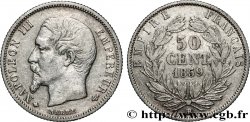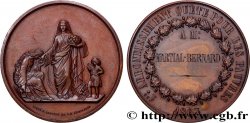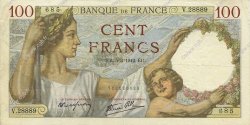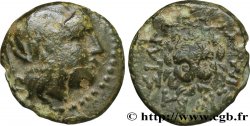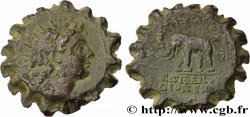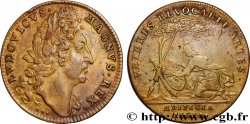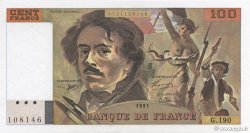Nicht verfügbar.
Artikel auf unserem Online-Shop verkauft (2021)
Preis : 80.00 €
Artikel auf unserem Online-Shop verkauft (2021)
Preis : 80.00 €
Type : Médaille, Enseignement primaire
Datum: c. 1855
Datum: (1855)
Name der Münzstätte / Stadt : 53 - Château-Gontier-sur-Mayenne
Metall : Silber
Durchmesser : 51,5 mm
Stempelstellung : 12 h.
Gewicht : 65,18 g.
Rand inscrite : A M.R J.N. B.TE LEMERCIER INSTITUTEUR PUBLIC A CHATEAU GONTIER (MAYENNE) 1852-53 + (main) ARGENT
Punze : main indicatrice (1845-1860) et ARGENT
Kommentare zum Erhaltungszustand:
Exemplaire nettoyé, des frottements dans les champs. Présence de coups et rayures, en particulier sur la tranche à 2 heures à l’avers
Vorderseite
Titulatur der Vorderseite ANÉPIGRAPHE.
Beschreibung Vorderseite Aigle impérial, les ailes partiellement repliées, à gauche, dans une couronne de palme et olivier.
Rückseite
Titulatur der Rückseite EMPIRE - FRANÇAIS // ENSEIGNEMENT / PRIMAIRE.
Beschreibung Rückseite Allégorie féminine couronnant deux enseignants ayant chacun 3 et 4 enfants devant eux. Signé : E. FAROCHON SCULP. 1855..
Kommentare
La signature de l’avers indique que la médaille utilise une face émise en 1855, tandis que la tranche inscrite indique que la médaille est attribuée à Monsieur Jean-Baptiste Lemercier, instituteur public à Château-Gontier en 1852-1853. Nous pouvons donc considérer que cette médaille fut offerte postérieurement aux années d’exercice (1852-1853) inscrite sur la tranche, soit en 1855.
Jean-Baptiste Farochon est l'élève de David d'Angers à l’École des beaux-arts de Paris en 1829. Lauréat du prix de Rome de gravure en médaille et pierre fine en 1835, il devient pensionnaire de la villa Médicis de 1836 à 1839. Il expose au Salon de 1833 à 1866. Il est professeur de gravure en médaille et pierre fine à l’École des beaux-arts de Paris en 1863. Son buste, par Gabriel Faraill, l'un de ses élèves, est conservé dans la salle Victor Schœlcher de cette école.
The signature on the obverse indicates that the medal uses a face issued in 1855, while the inscribed edge indicates that the medal is awarded to Mr. Jean-Baptiste Lemercier, public schoolteacher in Château-Gontier in 1852-1853. We can therefore consider that this medal was offered after the years of practice (1852-1853) inscribed on the edge, that is to say in 1855. Jean-Baptiste Farochon was a student of David d'Angers at the École des Beaux-Arts in Paris in 1829. Winner of the Prix de Rome for medal and fine stone engraving in 1835, he became a resident of the Villa Medici from 1836 to 1839. He exhibited at the Salon from 1833 to 1866. He was a professor of medal and fine stone engraving at the École des Beaux-Arts in Paris in 1863. His bust, by Gabriel Faraill, one of his students, is kept in the Victor Schœlcher room of this school
Jean-Baptiste Farochon est l'élève de David d'Angers à l’École des beaux-arts de Paris en 1829. Lauréat du prix de Rome de gravure en médaille et pierre fine en 1835, il devient pensionnaire de la villa Médicis de 1836 à 1839. Il expose au Salon de 1833 à 1866. Il est professeur de gravure en médaille et pierre fine à l’École des beaux-arts de Paris en 1863. Son buste, par Gabriel Faraill, l'un de ses élèves, est conservé dans la salle Victor Schœlcher de cette école.
The signature on the obverse indicates that the medal uses a face issued in 1855, while the inscribed edge indicates that the medal is awarded to Mr. Jean-Baptiste Lemercier, public schoolteacher in Château-Gontier in 1852-1853. We can therefore consider that this medal was offered after the years of practice (1852-1853) inscribed on the edge, that is to say in 1855. Jean-Baptiste Farochon was a student of David d'Angers at the École des Beaux-Arts in Paris in 1829. Winner of the Prix de Rome for medal and fine stone engraving in 1835, he became a resident of the Villa Medici from 1836 to 1839. He exhibited at the Salon from 1833 to 1866. He was a professor of medal and fine stone engraving at the École des Beaux-Arts in Paris in 1863. His bust, by Gabriel Faraill, one of his students, is kept in the Victor Schœlcher room of this school







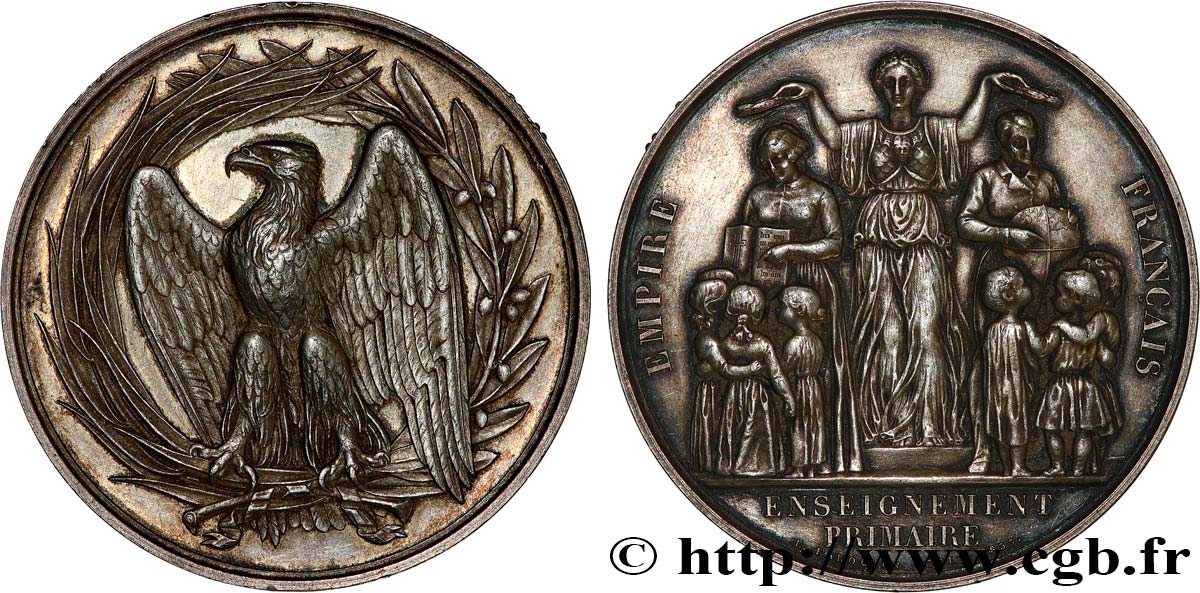
 Berichten über einen Fehler
Berichten über einen Fehler Die Seite drucken
Die Seite drucken Teilen meiner Auswahl
Teilen meiner Auswahl Stellen Sie eine Frage
Stellen Sie eine Frage Einlieferung/Verkauf
Einlieferung/Verkauf
 Details
Details
